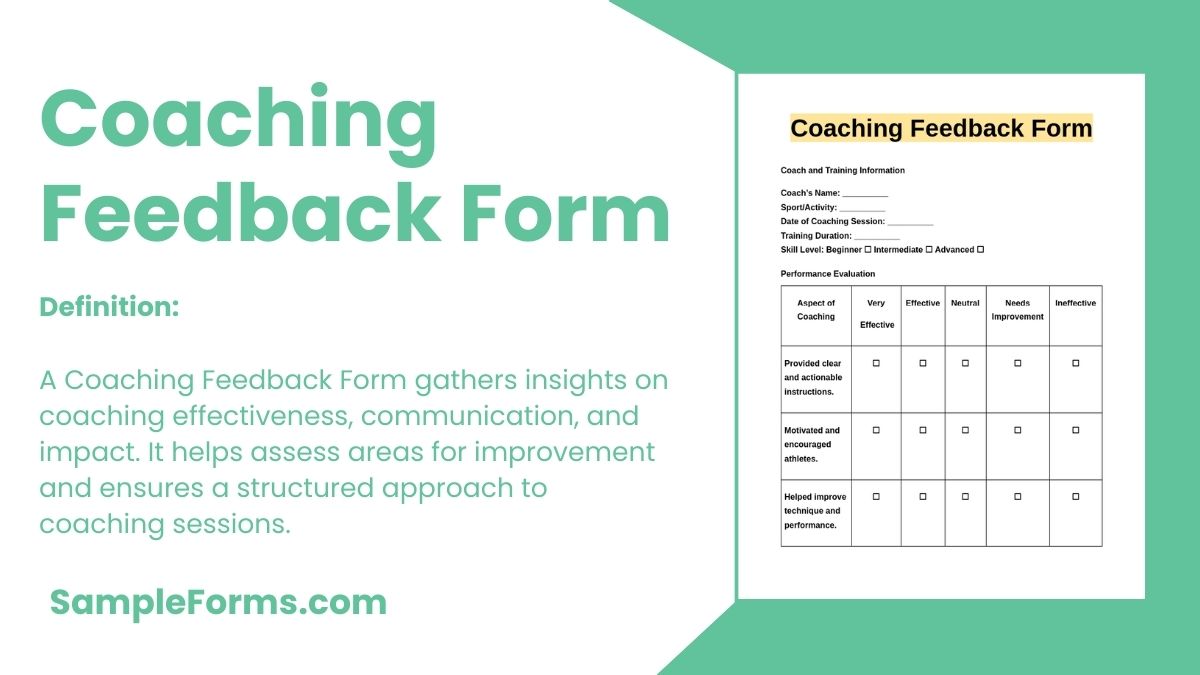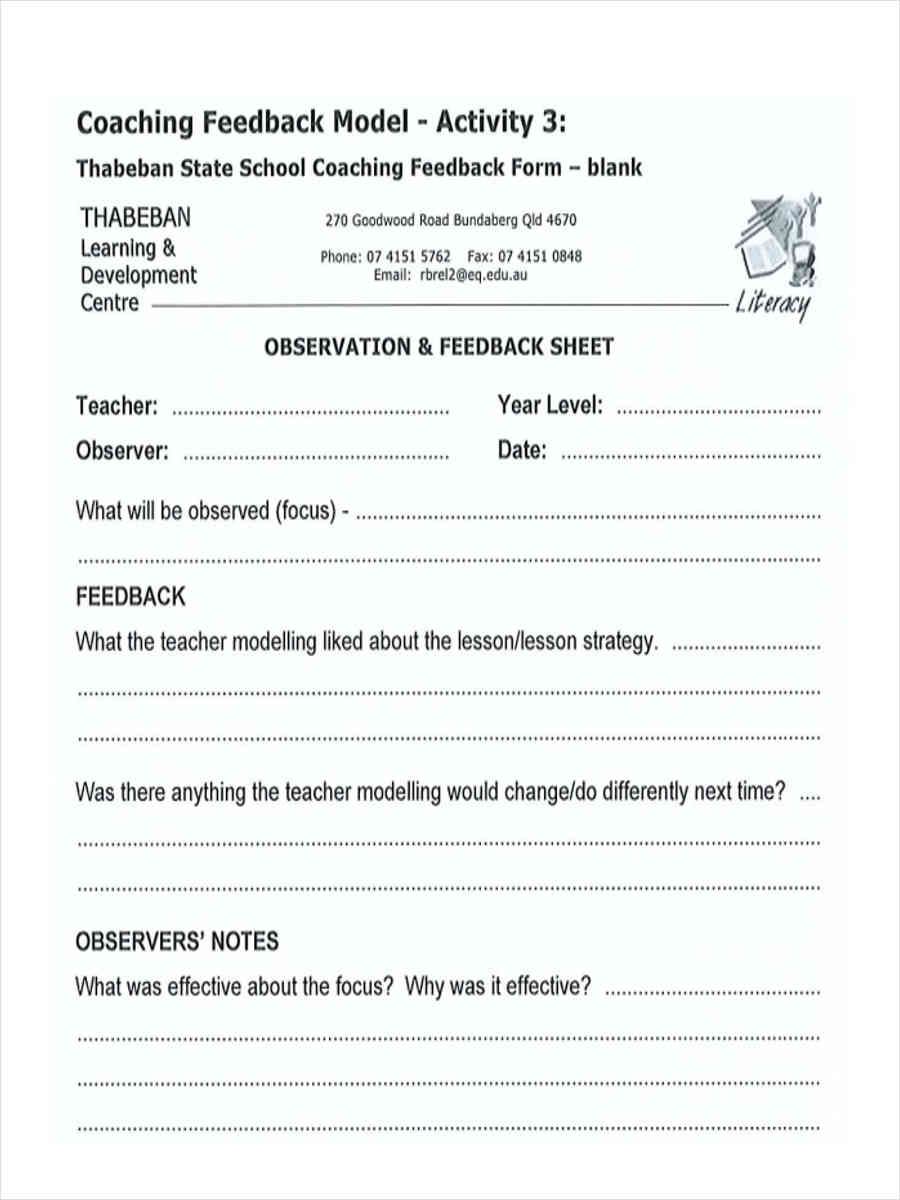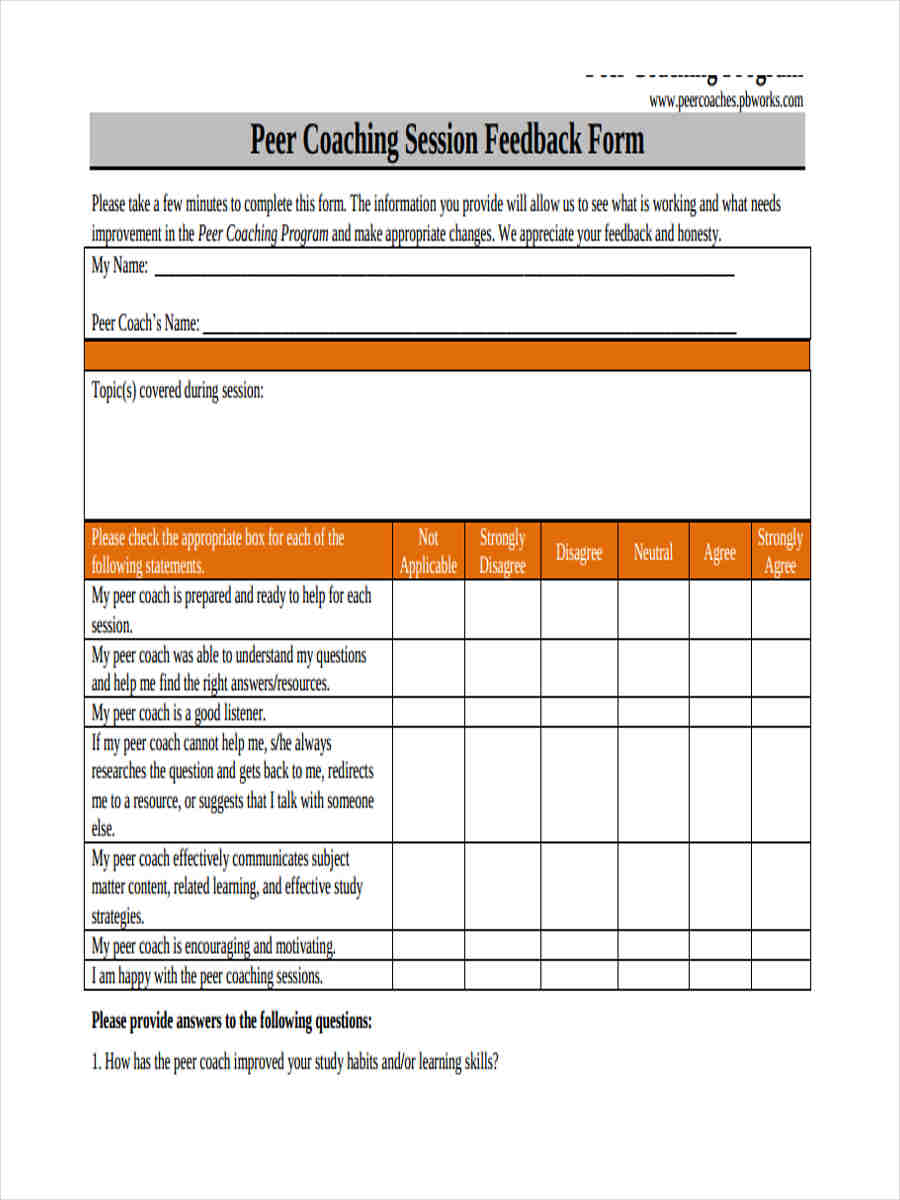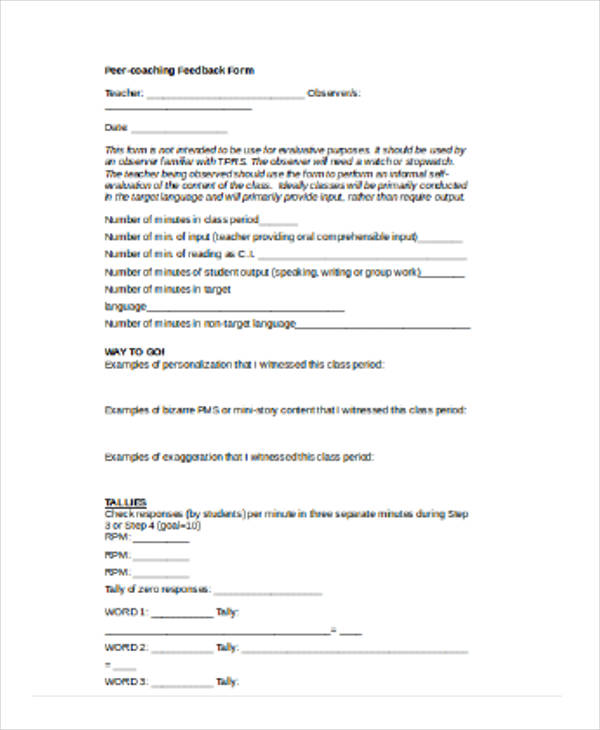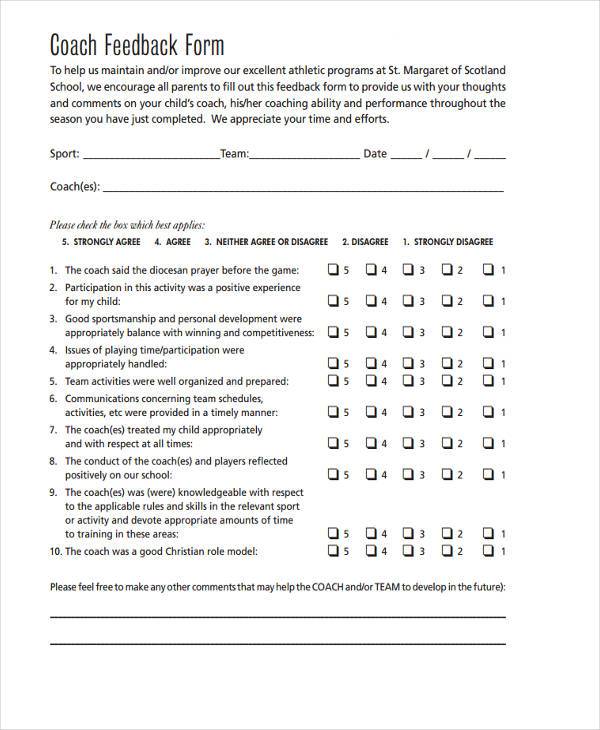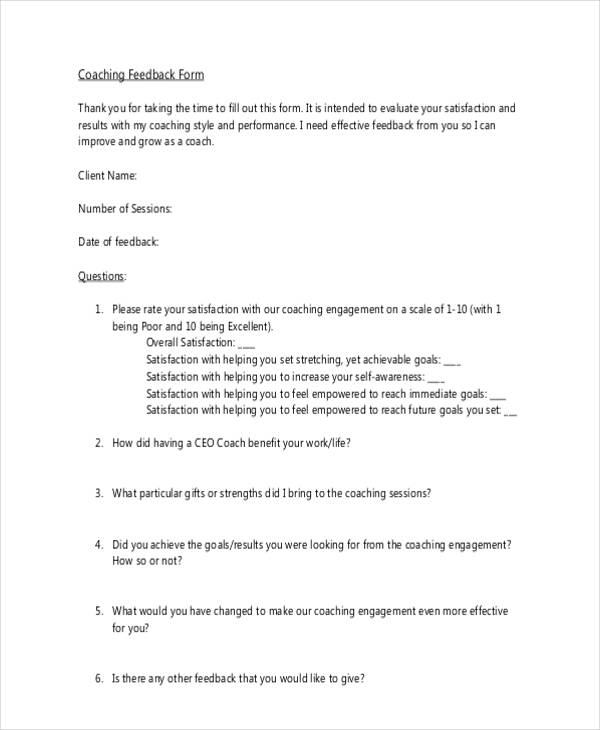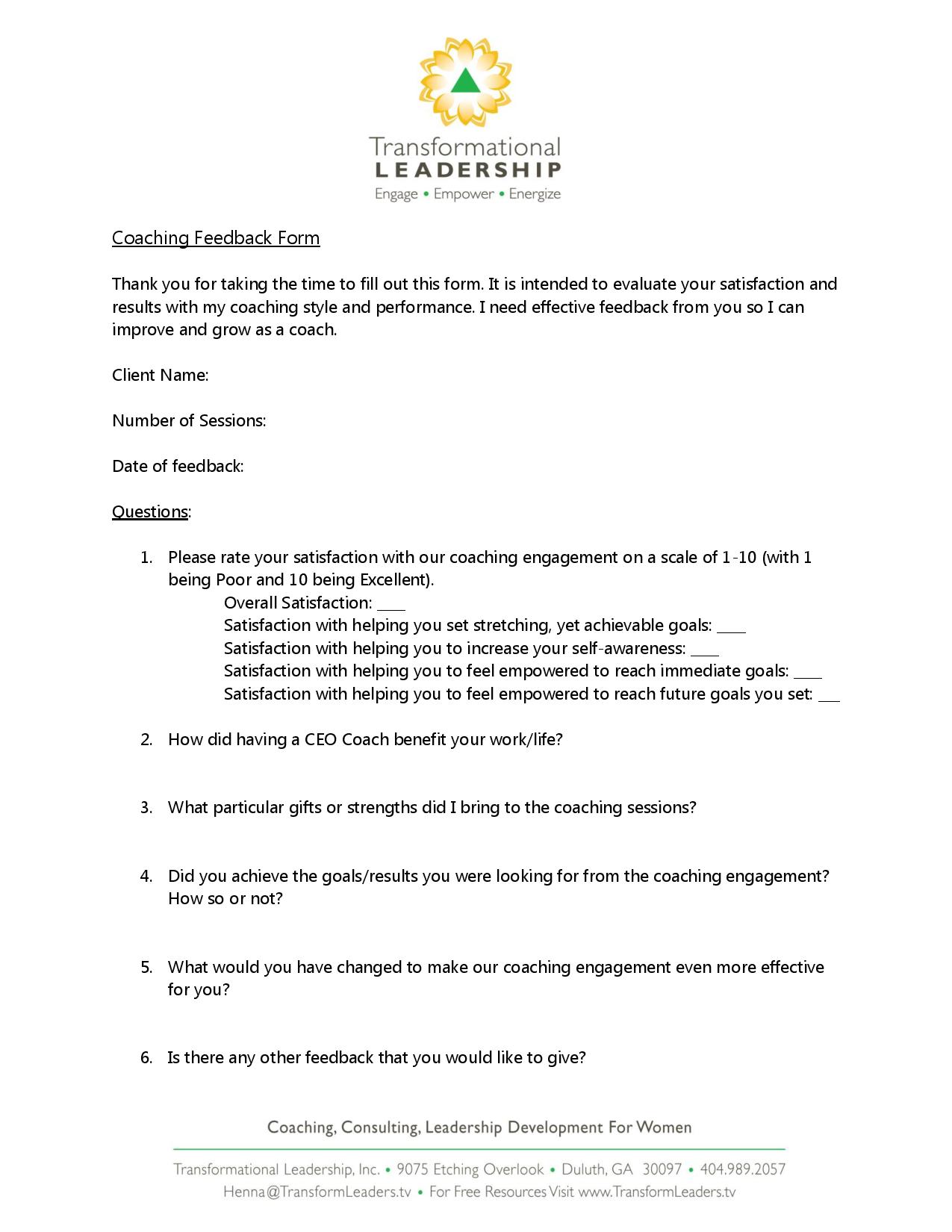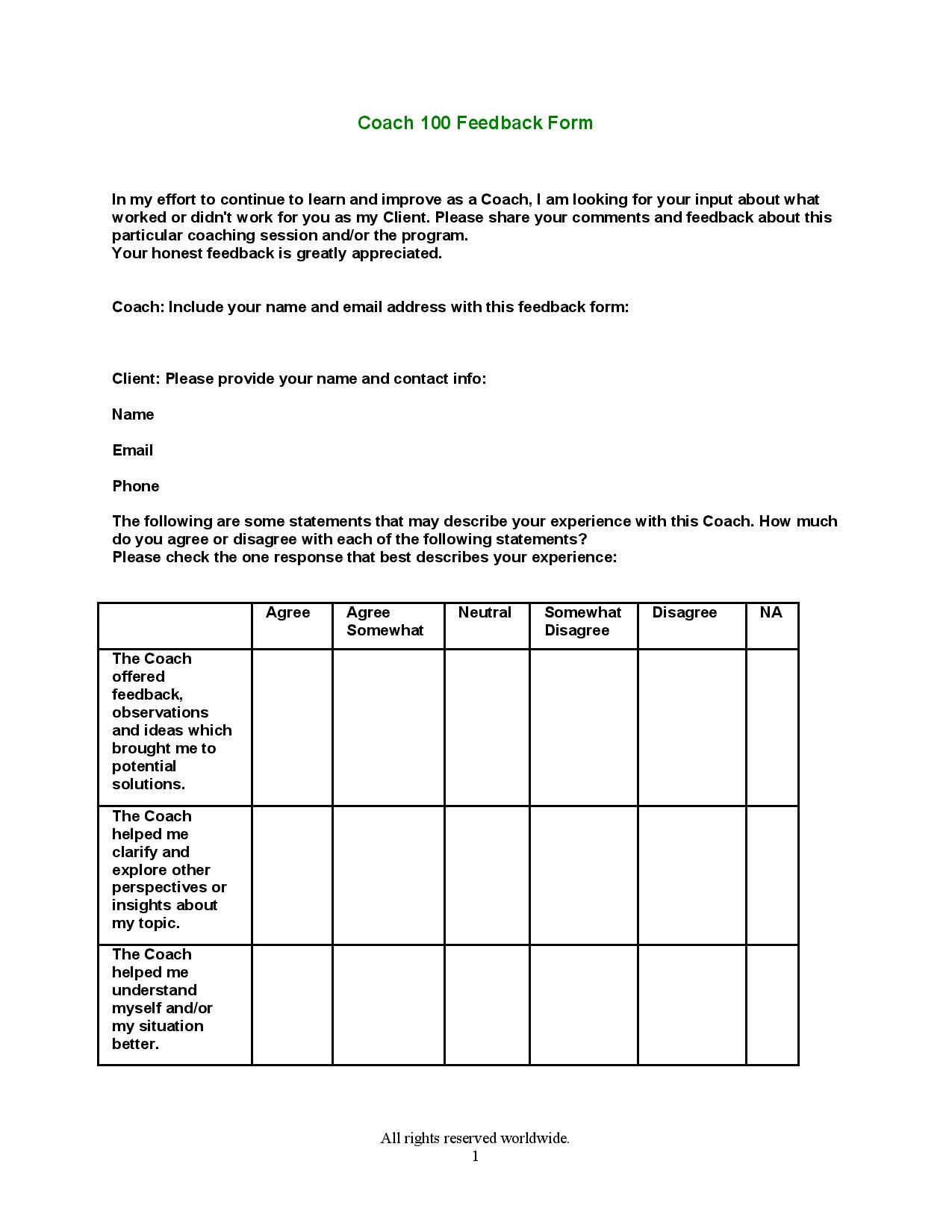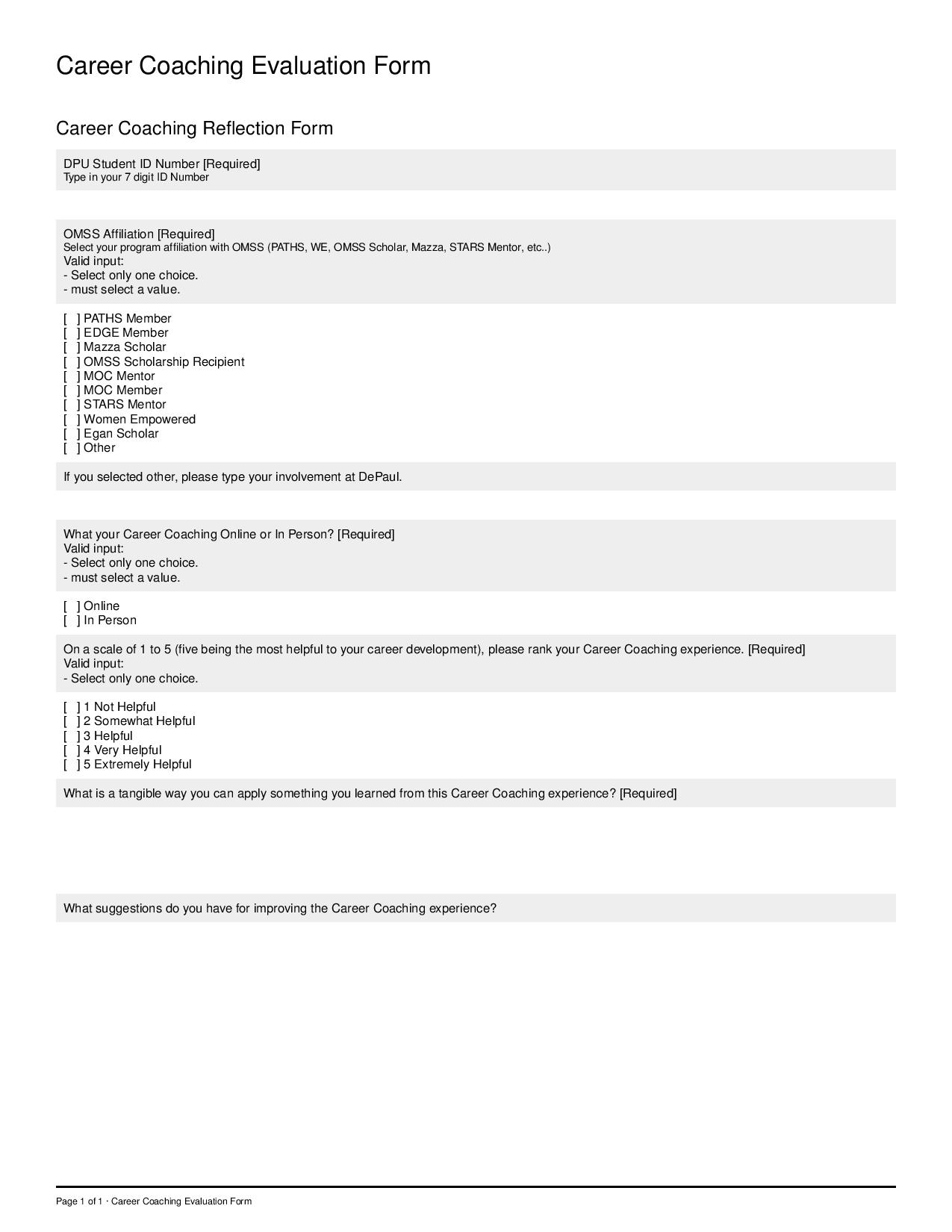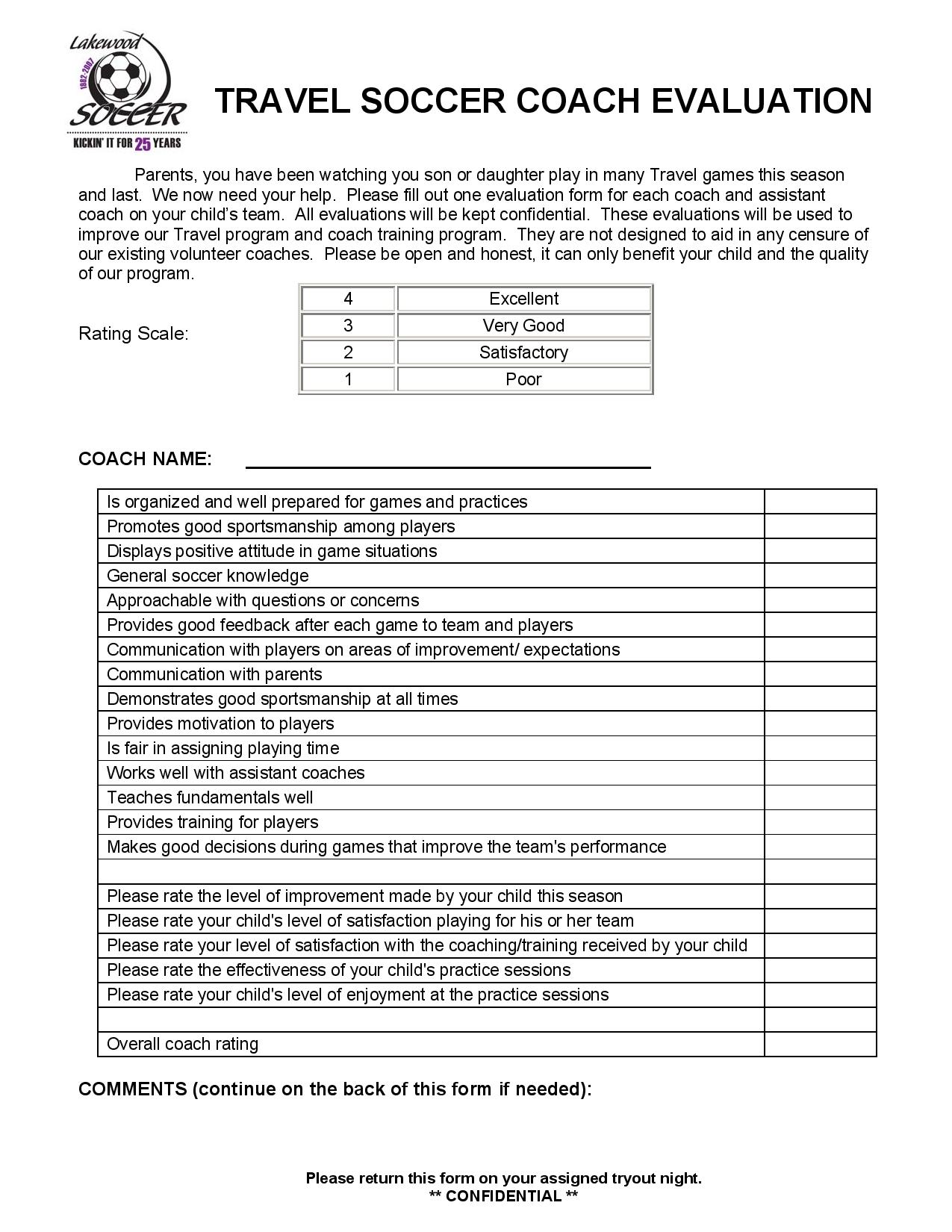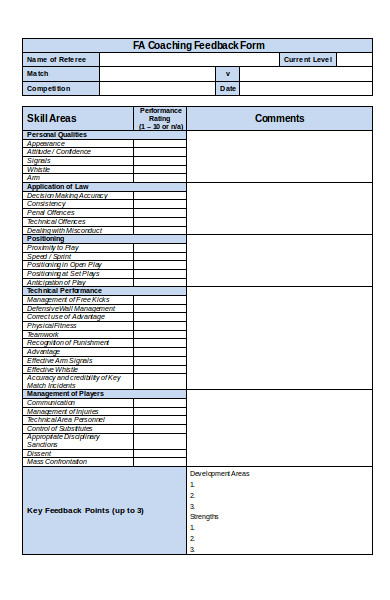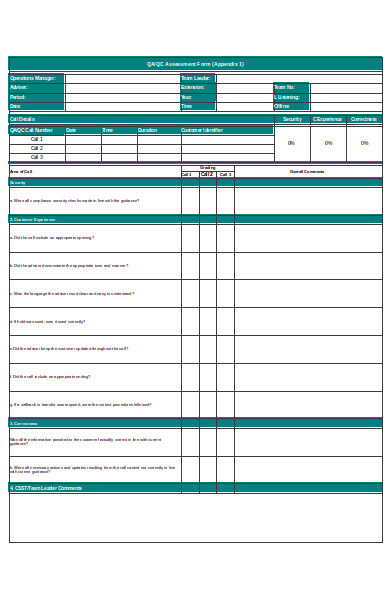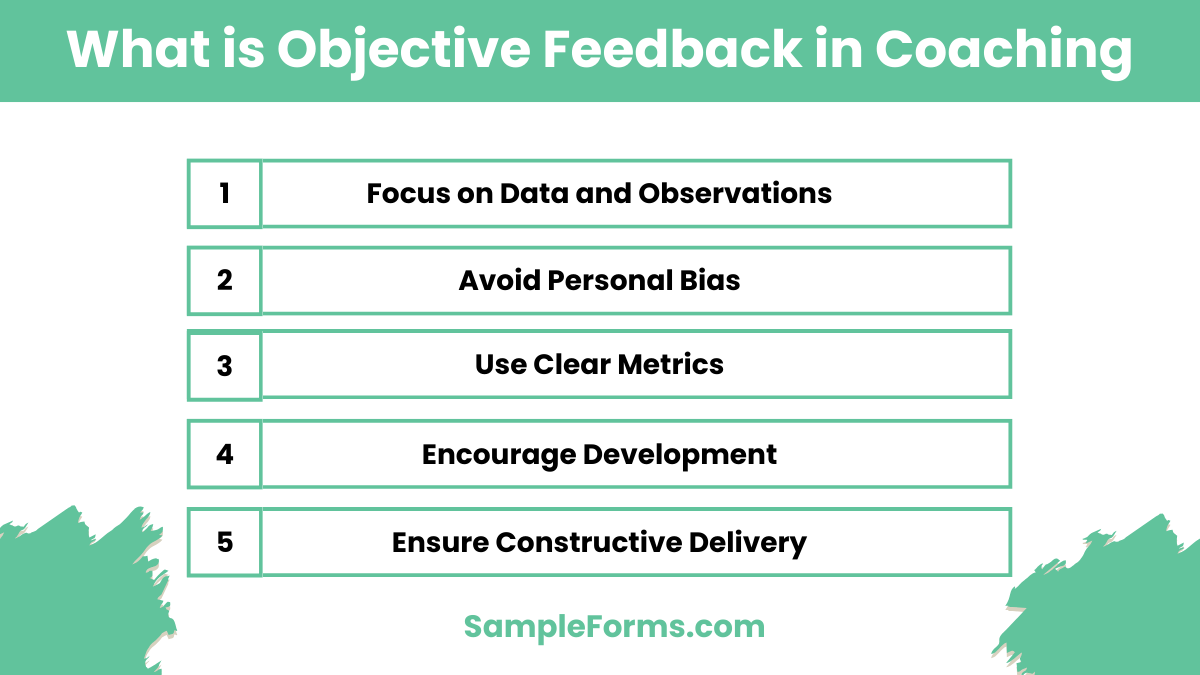A Coaching Feedback Form is an essential tool for evaluating coaching effectiveness, gathering insights, and identifying areas for improvement. Whether used in corporate training, sports coaching, or personal development, feedback forms help coaches enhance their methods, ensuring better engagement and progress tracking. A structured Feedback Form provides constructive reviews from trainees, employees, or athletes, allowing for continuous refinement of coaching techniques. This guide covers the key elements, best practices, and templates for creating effective coaching feedback forms, ensuring structured and actionable responses for measurable improvements.
Download Coaching Feedback Form Bundle
What is Coaching Feedback Form?
A Coaching Feedback Form is a structured document used to collect feedback from individuals receiving coaching. It helps evaluate coaching methods, effectiveness, and areas for improvement. This form typically includes ratings, open-ended questions, and performance-based criteria. Used in various industries like education, business training, and sports, it ensures that coaching meets the needs of trainees and enhances their development. With actionable insights from participants, coaches can refine their approach, address concerns, and deliver better coaching experiences that drive meaningful results.
Coaching Feedback Format
Coach Information
Full Name: __________
Position/Title: __________
Organization/Department: __________
Session Details
Date of Coaching Session: __________
Duration of Session: __________
Coaching Topic/Focus Area: __________
Feedback on Coaching Effectiveness
Clarity of Explanation and Guidance: __________
Ability to Provide Actionable Insights: __________
Responsiveness to Questions and Concerns: __________
Communication and Engagement
Encouragement of Open Discussion: __________
Use of Real-Life Examples: __________
Ability to Motivate and Inspire Growth: __________
Overall Impact of Coaching
Improvement in Skills or Knowledge: __________
Confidence Level Before and After Session: __________
Application of Learning in Practical Scenarios: __________
Suggestions for Future Sessions
Areas for Improvement in Coaching: __________
Additional Topics for Future Coaching: __________
Final Thoughts and Recommendations: __________
Coaching Feedback Form for Teacher

A Coaching Feedback Form for Teacher helps evaluate teaching effectiveness, instructional methods, and student engagement. Similar to a Medical Feedback Form, it collects structured insights, ensuring continuous improvement in teaching approaches and student learning experiences.
Life Coaching Feedback Form
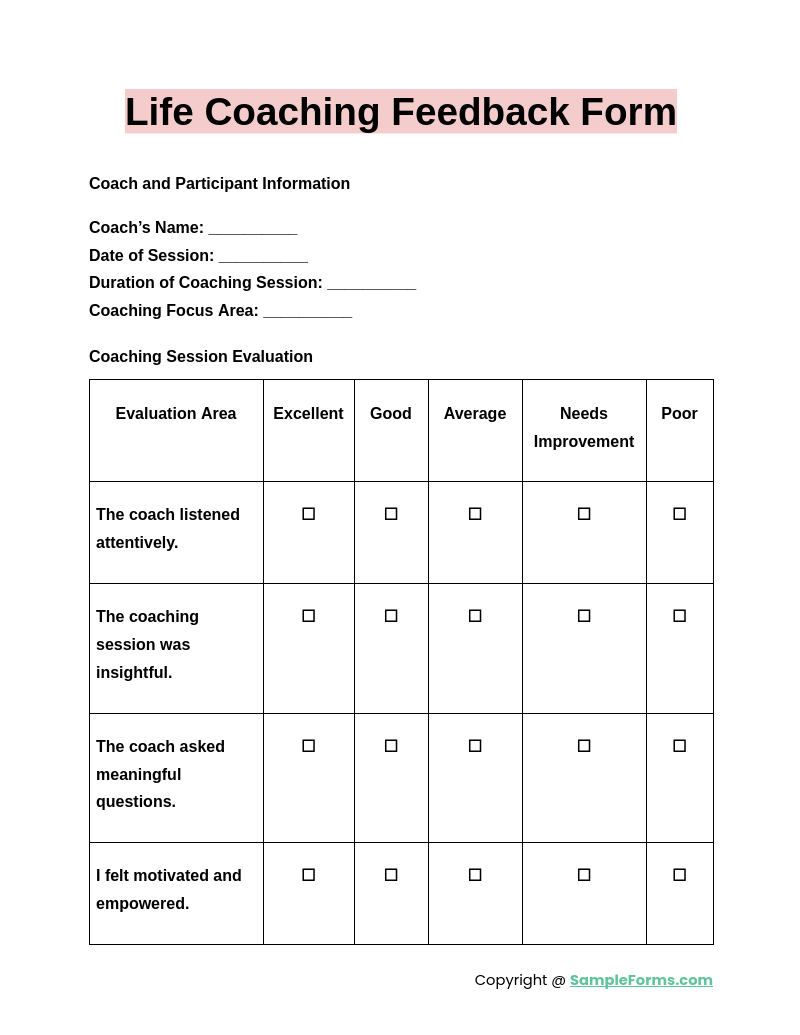
A Life Coaching Feedback Form assesses the impact of coaching sessions on personal development and goal achievement. Like a Photography Feedback Form, it gathers perspectives to refine coaching techniques, ensuring personalized and meaningful client growth.
Sports Coaching Feedback Form
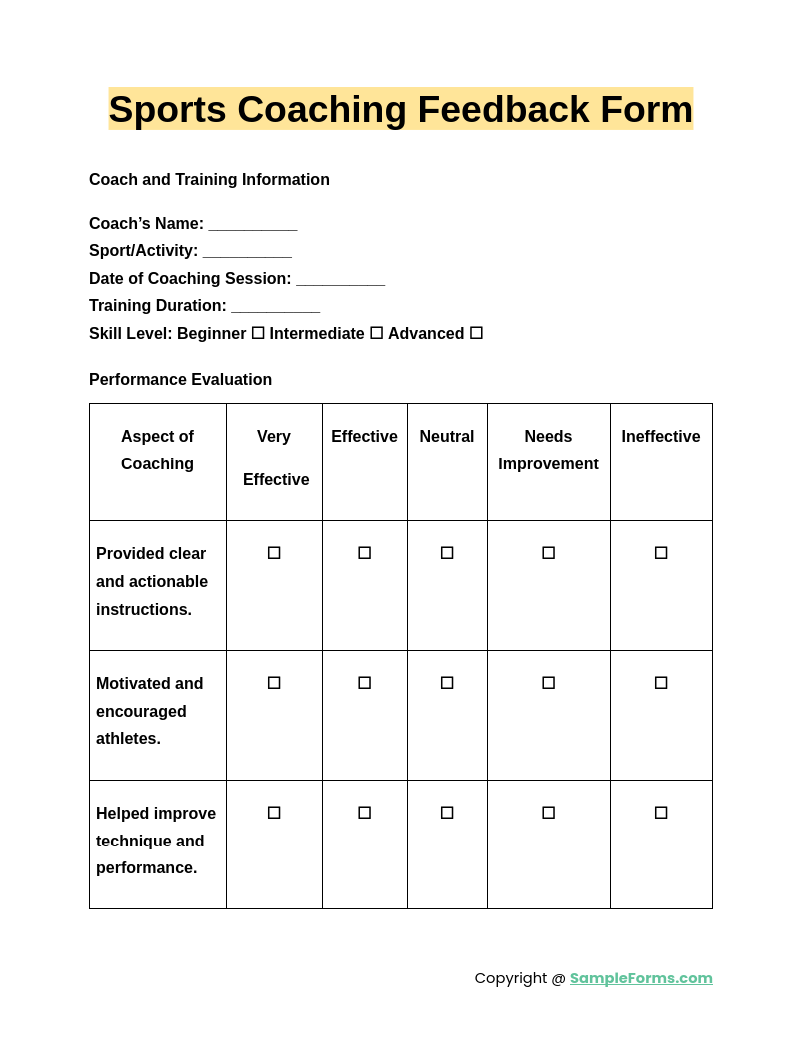
A Sports Coaching Feedback Form evaluates training effectiveness, athlete development, and coaching communication. Similar to a Library Feedback Form, it gathers structured responses, helping improve coaching strategies and enhance sports performance.
Coaching Feedback Form for Students
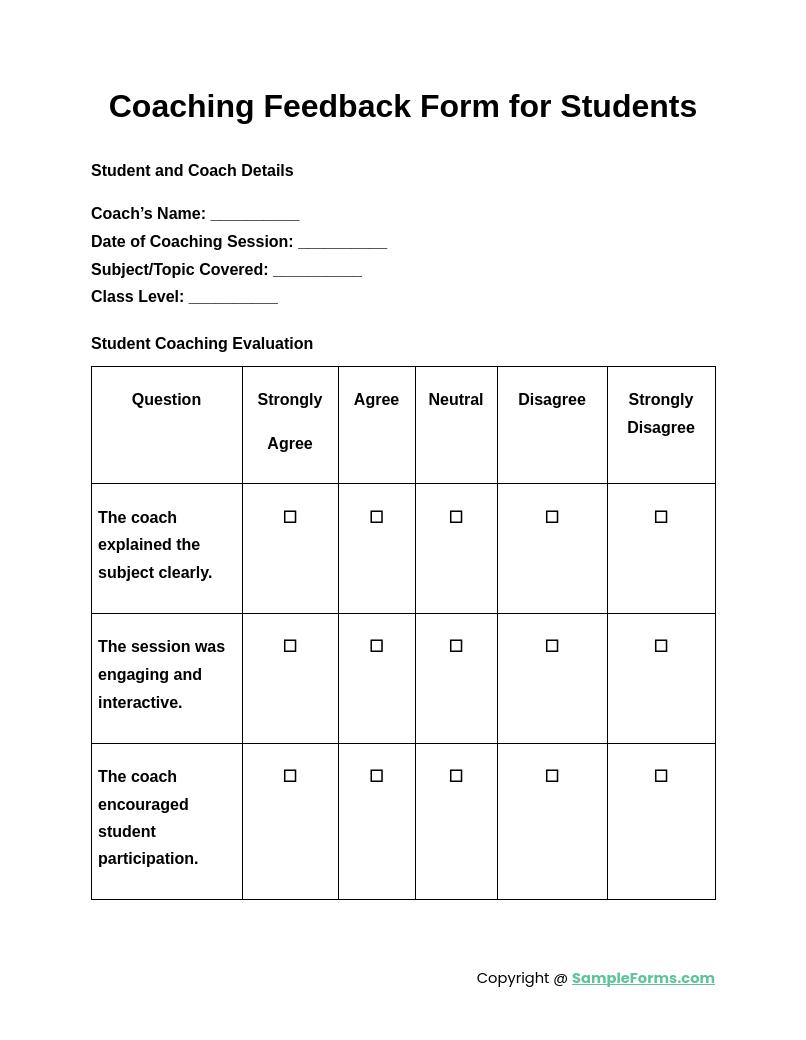
A Coaching Feedback Form for Students enables learners to assess coaching effectiveness, learning clarity, and engagement. Like a Lesson Feedback Form, it ensures structured input to refine coaching techniques and improve overall educational experiences.
Browse More Coaching Feedback Forms
Teacher Coaching Feedback Form
Peer Coaching Feedback Form
Student Peer Coaching Feedback Form
Sports Coaching Feedback Form
Client Coaching Feedback Form
Free Coaching Feedback Form
Transformational Leadership Feedback Form
Coach Feedback Form
Career Coaching Feedback Form
Travel Soccer Coach Valuation Feedback Form
Sample Coaching Feedback Form
Basic Coaching Feedback Form
How do you write feedback for coaching?
Effective coaching feedback should be structured, constructive, and goal-oriented. Similar to a Guest Feedback Form, it must highlight strengths while addressing areas for improvement to foster growth.
- Start with Positives: Mention what the coach did well, such as communication and engagement.
- Be Specific: Provide detailed feedback on coaching techniques, strategies, or session effectiveness.
- Address Areas for Improvement: Offer suggestions on how the coach can enhance their approach.
- Use Professional Language: Maintain a respectful and professional tone in feedback.
- Conclude with Encouragement: Reinforce strengths and motivate continuous improvement.
How should a coach give feedback?
Coaches should provide feedback that is clear, constructive, and motivational. Like a Peer Feedback Form, it should focus on growth and development rather than criticism.
- Be Timely: Provide feedback immediately after an observed behavior or performance.
- Focus on Specifics: Address particular strengths and areas of improvement.
- Encourage Self-Reflection: Ask questions to help individuals analyze their own performance.
- Balance Praise and Critique: Acknowledge achievements while providing guidance for enhancement.
- Create an Action Plan: Offer actionable steps for improvement and track progress.
What are the important aspects of coaching?
Coaching involves three crucial elements: communication, goal setting, and feedback. Like a New Joinee Feedback Form, it ensures structured progress tracking and development.
- Effective Communication: Coaches must listen actively and articulate guidance clearly.
- Goal-Oriented Approach: Coaching should focus on achieving specific, measurable objectives.
- Constructive Feedback: Providing actionable insights ensures continuous improvement.
- Mentorship and Support: Building trust fosters a productive coaching relationship.
- Performance Evaluation: Regular assessments help track progress and adapt strategies.
How do you write a positive review for a coach?
A positive coaching review should highlight the coach’s impact, guidance, and effectiveness. Similar to a Recruitment Feedback Form, it should be structured and informative.
- Mention Key Strengths: Focus on leadership, communication, and engagement skills.
- Provide Personal Insights: Describe how the coach helped improve skills or mindset.
- Highlight Growth and Progress: Explain the positive impact of coaching on performance.
- Use Professional and Appreciative Tone: Keep the review formal yet appreciative.
- End with a Recommendation: Encourage others to seek guidance from the coach.
What is objective feedback in coaching?
Objective feedback is unbiased, fact-based, and performance-driven. Similar to a Fitness Feedback Form, it ensures structured evaluations that lead to measurable improvement.
- Focus on Data and Observations: Provide factual insights rather than opinions.
- Avoid Personal Bias: Keep feedback professional and performance-based.
- Use Clear Metrics: Set benchmarks for evaluating progress.
- Encourage Development: Provide insights that help refine skills and strategies.
- Ensure Constructive Delivery: Offer feedback in a way that motivates growth rather than discourages.
What are powerful coaching questions examples?
Powerful coaching questions encourage self-reflection and growth. Like an Appraisal Feedback Form, they focus on improvement. Examples include What challenges are holding you back? and What steps can you take to achieve your goal?
What is corrective feedback in coaching?
Corrective feedback helps improve performance and behaviors constructively. Similar to a Client Feedback Form, it highlights areas for improvement while maintaining a positive and solution-focused approach for better coaching outcomes.
What is hot feedback in coaching?
Hot feedback is immediate and specific, given right after an observed action. Like an HR Feedback Form, it ensures real-time improvement and correction, allowing individuals to adjust their approach quickly for better results.
What is a good sentence for feedback?
A strong feedback sentence is clear, constructive, and encouraging. Like a Seminar Feedback Form, it should be direct, such as You communicated your ideas well, but refining delivery would make your message even stronger.
What is the best form of feedback?
The best feedback is clear, actionable, and balanced. Similar to a Service Feedback Form, it highlights strengths while providing constructive suggestions for improvement to ensure continuous growth and better performance.
What is the coaching feedback model?
A coaching feedback model provides a structured way to give constructive feedback. Like an Automobile Buyer Feedback Form, it ensures clarity by following frameworks like SBI (Situation, Behavior, Impact) or GROW (Goal, Reality, Options, Will).
What is coaching in one sentence?
Coaching is a structured process that guides individuals toward achieving personal or professional goals. Like a Vendor Feedback Form, it ensures progress through continuous support, evaluation, and improvement strategies.
What are powerful coaching questions?
Powerful coaching questions drive deeper reflection and motivation. Similar to a Volunteer Feedback Form, they focus on growth, such as What is one change you can make today to get closer to your goal?
How do you evaluate your coaching performance?
Coaching performance is assessed through feedback, progress tracking, and impact measurement. Like a Feedback Form for Doctor, it gathers insights from participants to refine coaching methods and enhance effectiveness.
What is constructive feedback in coaching?
Constructive feedback in coaching is clear, actionable, and growth-oriented. Like a Customer Guest Feedback Form, it provides insights while maintaining encouragement, helping individuals develop skills and overcome challenges for long-term success.
A Patient Feedback Form helps improve healthcare services, just as a Coaching Feedback Form refines coaching effectiveness. These forms are crucial for collecting structured feedback, ensuring performance improvement, and maintaining engagement. Whether used in business training, academic settings, or sports, a well-designed feedback form identifies coaching strengths and areas requiring enhancement. By regularly gathering and analyzing responses, organizations and individuals can create more impactful coaching experiences. A structured approach to coaching feedback helps ensure continuous improvement, better learner outcomes, and stronger professional growth.
Related Posts
-
FREE 6+ Market Research Forms in PDF | MS Word
-
FREE 3+ Feedback Observation Forms in PDF | MS Word
-
Classroom Observation Form
-
Behavior Observation Form
-
FREE 32+ Different Formats for Feedback Forms in PDF | Ms Word | Excel
-
FREE 11+ Property Feedback Forms in PDF | Ms word
-
FREE 11+ Observational Feedback Forms in PDF | MS Word
-
Nursing Feedback Form
-
Form for 360 Degree Feedback
-
FREE 10+ Feedback Forms Aimed at Doctors | PDF
-
FREE 11+ Demo Feedback Forms in PDF | MS Word
-
FREE 11+ Exam and Test Feedback Forms in PDF | Ms Word
-
FREE 10+ Medical Feedback Forms in PDF
-
Induction Feedback Form
-
Form for Lecture Feedback
